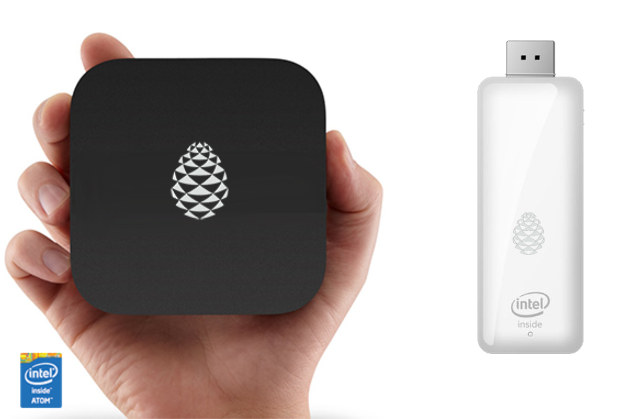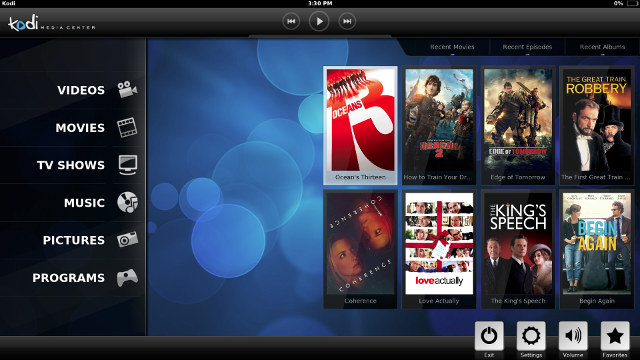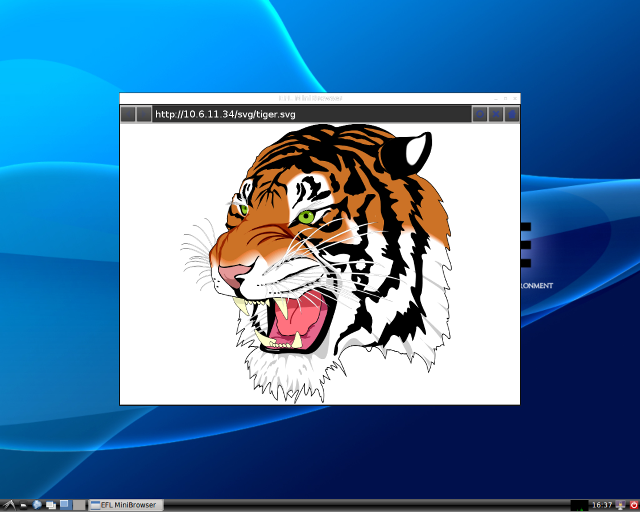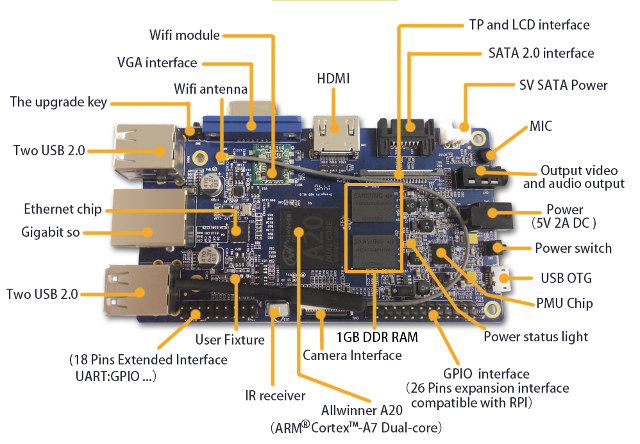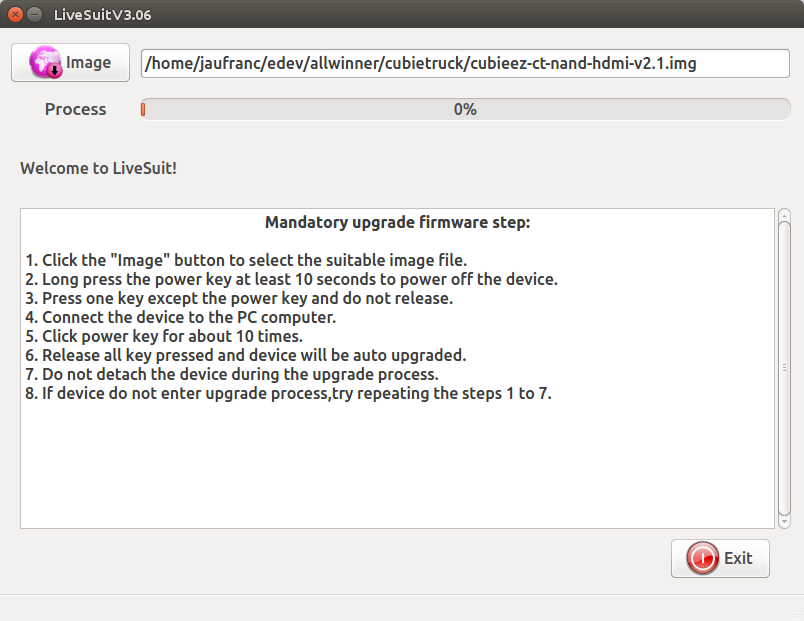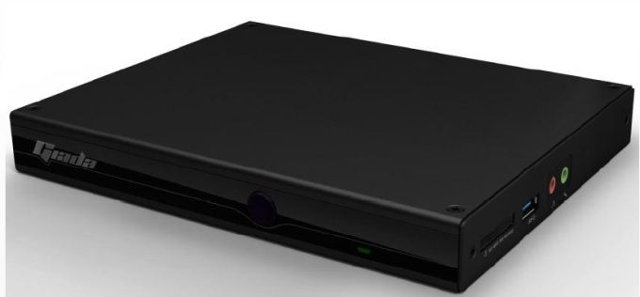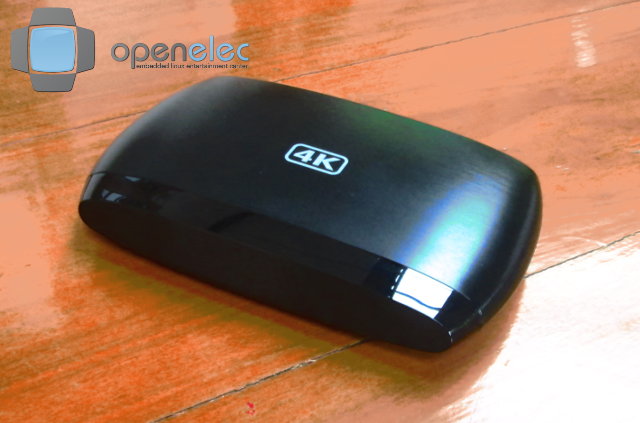Lots of Intel Atom Z3735 based mini PCs have been announced, and some such as MeegoPad T01 have already ended up in the hands of end users, but most of them are running Windows 8.1 with bing, with some featuring a dual boot image with Windows and Android, but no company has yet committed to release one supporting a Linux desktop distribution. This may change thanks to CloudProject Air X1 and Air S1 mini PCs that already support Windows 8.1 (with bing or pro), and Android 4.4.4, but the company is also working on a Linux port, and both models will be available in consumers and enterprise editions. Air X1 is the black mini PC, and Air S1 an HDMI stick stick, both powered by Intel Atom Z3735F processor, and they share most of the same specifications: SoC – Intel Atom Z3735F “Bay Trail” quad core processor @ 1.33 GHz […]
Kodi 14.0 Helix Release
XBMC (name) is definitely dead, as developers of the popular open source “entertainment center” project have announced the first stable Kodi release – the new name of XBMC – with XBMC 14.0 Helix. Key changes and new features include: Update to FFmpeg 2.4.4 – Adds H.265 / HEVC and VP9 video codecs support. Software decode only. Library Improvements – Scanning speed greatly improved, better UPnP support including with PlanOn and MediaBrowser servers. New Configuration features – Add-on update controls, choice of virtual keyboard layouts for tablets and remote control users in order to support multiple languages. Android, iOS and Embedded – 4K support for Amlogic S802, more ARM SoCs are now supported in Android, fast forward/rewind improvements. Airplay support fixed, except for Android. Freescale i.MX6 support for Kodi Linux. Windows, OSX, and Linux – Audio playback improvements. DXVA video playback has been improved for Windows too. A critical Kodi Linux […]
TyGL OpenGL ES 2.0 Backend for WebKit Speeds Up Web Rendering by Up to 11 Times
ARM, Szeged University in Hungary, and Samsung Research UK have been working on TyGL, a new backend for WebKit accelerated with OpenGL ES2.0, and developed and tested on ARM Mali-T628 GPU found in Samsung ARM Chromebook. It will typically provide 1.5 to 4.5 times higher performance, but in the best cases, it can achieve up to eleven times the performance of a CPU-only rendered page. The key features of TyGL include: Web rendering accelerated by GPU – Batching of draw calls delivers better results on GPUs. TyGL groups commands together to avoid frequent state changes while calling the Graphics Context API. Automatic shader generation – TyGL generates complex shaders from multiple shader fragments, and ensures the batches fit into the shader cache of the GPU. Trapezoid based path rendering – Work in progress. It will leverage GPU capabilities such as the Pixel Local Storage extension for OpenGL ES. No software […]
Orange Pi Development Boards Are Raspberry Pi “Clones” based on Allwinner A20 and A31s
After Raspberry Pi, Waxberry Pi, and Banana Pi boards, here come another fruit-named board with Orange Pi. There are actually three models, with Orange Pi and Orange Pi mini based on Allwinner A20, and Orange Pi Plus powered by a quad core Allwinner A31s processor. I’ve drawn a comparison table with the specifications for the three models. Please note that Orange Pi Plus full specifications have not been released yet, so I don’t have all details. Orange Pi Mini Orange Pi Orange Pi Plus SoC Allwinner A20 dual core Cortex A7 processor up to 1GHz with Mali-400 MP2 GPU Allwinner A31s quad core Cortex A7 processor with PowerVR SGX544MP2 GPU System Memory 1 GB DDR3 Storage 2x micro SD slot + SATA NAND Flash + micro SD slot + SATA TBD Video Output HDMI, AV, and DSI I/F HDMI, AV, VGA, and DSI I/F HDMI, AV, and DSI I/F Audio I/O HDMI, […]
CubieTruck Metal Case Kit Getting Started Guide and Review
I’ve received CubieTruck Metal Case kit just over a month ago, but just like for Ubuntu on ODROID-XU3 Lite, the board could not get HDMI EDID info from my Panasonic TV, which led to a crash at boot time. CubieTech has now fixed the issue, so I’ve finally been able to complete the review with Cubieez (Cubie Easy) distribution, pre-installed on the board, and based on Debian 7.6. You can get the full hardware specs on my previous post, but the kits is comprised of four parts: CubieTruck development based on Allwinner A20 dual core processor, a rugged metallic enclosure, a 128GB SSD, and a 5,300 mAh battery acting as a UPS. I’ll start by showing how to setup the board, test SATA and Gigabit Ethernet performance, check if the battery acts as expected, try to use the board as a desktop replacement with LibreOffice, Chromium, and so on, and […]
Giada F110D and Asus E210 Fanless mini PCs Feature Intel Bay Trail Celeron N2807 Processor
We’ve seen many small computer based on Intel Atom Bay Trail-T (Tablet) Z3735F/G processor lately including MINIX NEO Z64 and MeegoPad T01, which should ship by the end of the month (it keeps getting postponed). But Intel also makes Bay Trail-M (Mobile) processor for laptops, including Celeron N2807 dual core processor found in ECS Liva. Two new products based on N2807 processor has recently surfaced: Giada F110D and Asus E210. According to CPU Boss (see Google cache if link has problem), Z3735F has slightly greater multi-core performance than N2807, but the latter has better single thread performance based on Passmark. One key advantage of the Celeron processors over the Atom ones is that they support up to 4GB RAM instead of 1 or 2 GB for the Bay Trail-T processor. Giada F110D also has one version with a more powerful Intel Bay Trail-D (Desktop) Celeron J1900 quad core processor. Giada […]
Linaro 14.12 Release with Linux 3.18 and Android 5.0
Linaro usually releases images and source code on the last Thursday of the month, but since most people will have long holidays for Chritsmas and New Year, the last working Thrusday of this month was yesterday (18th). Linaro 14.12 release includes Linux kernel 3.18 (baseline), Linux 3.10.62 & 3.14.26 (LSK, same versions as last month), and Android 5.0.1 Lollipop. Here are the highlights of this release: Linux Linaro 3.18-2014.12 Based on v3.18 release GATOR topic: version 5.20 updated topic from Qualcomm LT (includes IFC6410 board support) updated integration-linaro-vexpress64 topic by ARM LT (FVP Base and Foundation models, and Juno support) updated LLVM topic (uses the community llvmlinux-latest branch) included ILP32 patch set v3 rebased on 3.18. Boot tested with aarch64 userland. Work is in progress to test with aarch64-ilp32 userland. config fragments updated – SELinux related config options enabled in linaro-base.conf, device tree runtime self tests enabled in distribution.conf Linaro […]
OpenELEC For Amlogic Media Players – MXIII, Tronsmart Vega S89, TV110 and CX-S806 (S812)
XBMC / Kodi is now working pretty well on Android devices, and even automatic frame rate switching is available on some Android platforms such as MINIX NEO X6. But if you want a pure XBMC experience, you may consider XBMC/Kodi Linux distributions such as OpenELEC also providing support for some USB DVB tuner dongles and PVR function, both of which are currently unavailable in Kodi for Android. We’ve also seen OpenELEC released for M8 TV Box, but Kerber, a Russian developer (or at least a Russian speaking developer) has also released OpenELEC 4.97.x for MXIII (Amlogic S802), Tronsmart Vega S89 (Amlogic S802), TV110 (Amlogic S805) , and CX-S806 (Amlogic S812) media players. The forum post is dated on August 2014, but it has been updated on December 12 with more up-to-date images: OpenELEC-Amlogic.MX3.arm-4.97.2.zip for MXIII (1GB) OpenELEC-Amlogic.S82.arm-4.97.2.zip for Tronsmart Vega S89 (2GB) OpenELEC-Amlogic.TV110.arm-4.97.2.zip for TV110 OpenELEC-Amlogic.S806.arm-4.97.2.zip for CX-S806 (Amlogic S812 […]


